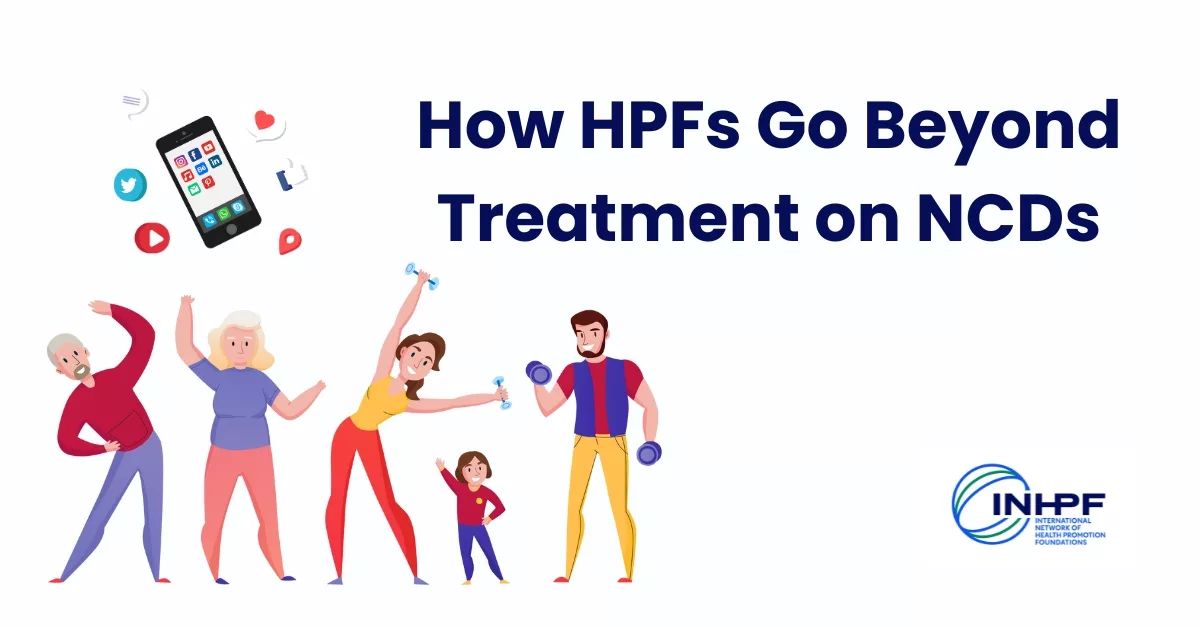The NCD Burden
Noncommunicable diseases (NCDs) are the leading cause of death globally, accounting for 75% of non-pandemic-related deaths in 2021. Cardiovascular diseases, cancers, chronic respiratory diseases, and diabetes are responsible for 80% of premature NCD deaths. These diseases disproportionately impact low- and middle-income countries, where 82% of premature deaths occur. Key risk factors such as tobacco use, unhealthy diets, physical inactivity, and alcohol use are driven by broader social, economic, and environmental systems.
Why Prevention Matters
Preventing NCDs is not only a public health imperative but an economic and social one. Early interventions such as risk factor reduction, screening, and community-based programs are cost-effective and can alleviate the burden on healthcare systems. A multisectoral approach that integrates health into policies across transport, education, agriculture, and urban planning is essential.
Social Impacts
NCDs deepen social inequalities and strain family and community support systems. Lower-income populations are more exposed to risk factors and have less access to care. The costs of managing chronic illness can drive households into poverty. Prevention policies that are equity-focused help break this cycle.
Risk Factors
NCDs are driven by:
- Behavioral risks: Smoking, alcohol use, unhealthy diets, and sedentary lifestyles
- Metabolic risks: High blood pressure, obesity, high blood glucose, and cholesterol
- Environmental risks: Air pollution is a leading cause of NCD-related deaths
Ref: https://www.who.int/news-room/fact-sheets/detail/noncommunicable-diseases
Case Examples
1. VicHealth (Australia)
Future Healthy Food Hubs: A $4 million investment across seven hubs increases access to affordable, culturally appropriate food in underserved areas. Each hub provides education, youth traineeships, markets, and local food networks.
Future Active: This initiative empowers youth aged 16–25 to redesign underused public spaces for physical activity. It improves inclusion, strengthens social connections, and offers employment pathways. Programs are co-designed by young people.
2. Health and Wellbeing Queensland (Australia)
My health for life: A free, evidence-based healthy lifestyle program to support Queenslanders to reduce their risk of developing chronic conditions such as type 2 diabetes, heart disease and stroke. Delivered in one-on-one, group, and culturally adapted formats, it has helped over 33,000 Queenslanders reduce risk factors such as waist size, alcohol intake, and inactivity.
Deadly Choices: A community-led health program for Aboriginal and Torres Strait Islander peoples. It promotes regular health checks and healthy behaviours through school programs, community events, and culturally tailored education.
3. HPA (Taiwan)
Metabolic Syndrome Empowerment: Uses digital tools and community support to track waist circumference, blood pressure, and lifestyle risks. Engaged 75,000 people in 2023.
Nutrition and Healthy Diet Promotion Act: Passed in 2023, it supports age-friendly meal environments and community nutrition promotion centers. 75,000+ seniors used these services, and 1,500 restaurants received diet consultations.
4. ThaiHealth (Thailand)
Feelfit & BAOJAI Platform: A suite of digital innovations—activity trackers, AI-driven health tips, gamification—promotes physical activity and personalized health planning for all ages.
Master Plan for Physical Activity Promotion (2018–2030): A long-term, cross-sectoral strategy creating supportive environments, policies, and monitoring systems to embed movement into daily life. This includes the Bangkok Declaration and physical activity report cards.
5. HPB (Singapore)
DigiCoach: A digital coaching platform using continuous glucose monitors and personalized advice to help high-risk adults manage blood sugar and adopt healthier habits over 12 weeks.
Healthy Meals in Preschools Programme (HMPP): Institutional guidelines and incentives for schools to serve nutritious meals and reduce sugar, salt, and fat. Combined with accreditation frameworks, it embeds prevention from early childhood.
Key Insights & Lessons Learned
1. Prevention Requires Whole-System Thinking
Health is shaped by more than healthcare. HPFs move beyond individual-level education to transform environments such as urban design, food systems, school infrastructure, and digital access. For instance, VicHealth’s investment in food hubs addresses not just nutrition, but employment, education, and cultural inclusion. Similarly, ThaiHealth’s use of a national master plan shifts physical activity from a personal choice to a structural norm.
2. Co-Design with Communities Drives Success
Programs designed and led by communities are more trusted, inclusive, and sustainable. Future Active in Victoria and Deadly Choices in Queensland are successful not because they tell people what to do, but because they are built with the people they serve. This principle of co-creation, especially with youth, Indigenous peoples, and minority groups ensures relevance and ownership.
3. Equity Is Not Optional
All successful HPF initiatives deliberately prioritize marginalized communities. In Taiwan, older adults and rural populations are reached through localized nutrition centers. HPB’s HMPP ensures health habits begin in early childhood, regardless of socioeconomic status. Deadly Choices centers cultural identity, while My health for life offers support in multiple languages. Equity is embedded through design, delivery, and outcomes.
4. Digital Health Is a Powerful Tool for Behavior Change
Digital interventions like DigiCoach, BAOJAI, and the Metabolic Risk Platform combine real-time data with customized feedback, nudges, and self-tracking to build awareness and accountability. Importantly, they also extend access to people who may be less likely to engage through traditional channels, including working adults and those in remote areas.
5. HPFs Operate at the Intersection of Policy and Practice
Unlike reactive health systems, HPFs initiate and influence policy based on what works in the field. Taiwan’s Nutrition Act, Thailand’s physical activity strategy, and Singapore’s preschool nutrition policy are all examples of policy born from practice. HPFs help connect grassroots insight to systemic reform, closing the loop between community needs and institutional change.
6. Long-Term Vision Backed by Consistent Investment
HPFs impact is cumulative: small-scale pilots that evolve into national programs; short-term coaching that shifts life-course risk. Their funding structures allow them to focus on preventive measures that don’t deliver overnight outcomes but yield generational impact.
7. Partnerships Multiply Impact
Every successful HPF project involves cross-sector collaboration with local government, schools, workplaces, community groups, or private industry. The Healthy Food Hubs and HMPP show how partnerships can redesign systems. ThaiHealth’s national coordination role and HWQld’s local partnerships enable scaling while preserving local relevance.
8. Data, Evaluation, and Adaptability Are Built In
Programs like BAOJAI and DigiCoach exemplify real-time data use for continuous improvement. Evaluation is not an afterthought but a core function. HPFs invest in tracking outcomes, learning from failures, and adapting programs in response to evidence and lived experience.
Conclusion
Health Promotion Foundations (HPFs) are reshaping the way we approach noncommunicable diseases not by reacting to illness, but by preventing it at its root. Their work spans from food systems and physical activity to digital coaching and national legislation, showing that meaningful change comes from transforming the environments, systems, and social conditions that shape our health.
Across all five organizations explored in this article, HPFs demonstrate how to move beyond treatment toward empowerment, equity, and innovation. They make prevention local, inclusive, and sustainable, while influencing national policy with real-world evidence. By integrating community voices, digital tools, and long-term strategies, HPFs are leading a preventive way in public health.
INHPF invites health professionals, policymakers, and partners to build on these insights and help embed prevention into every system that touches people’s lives.





